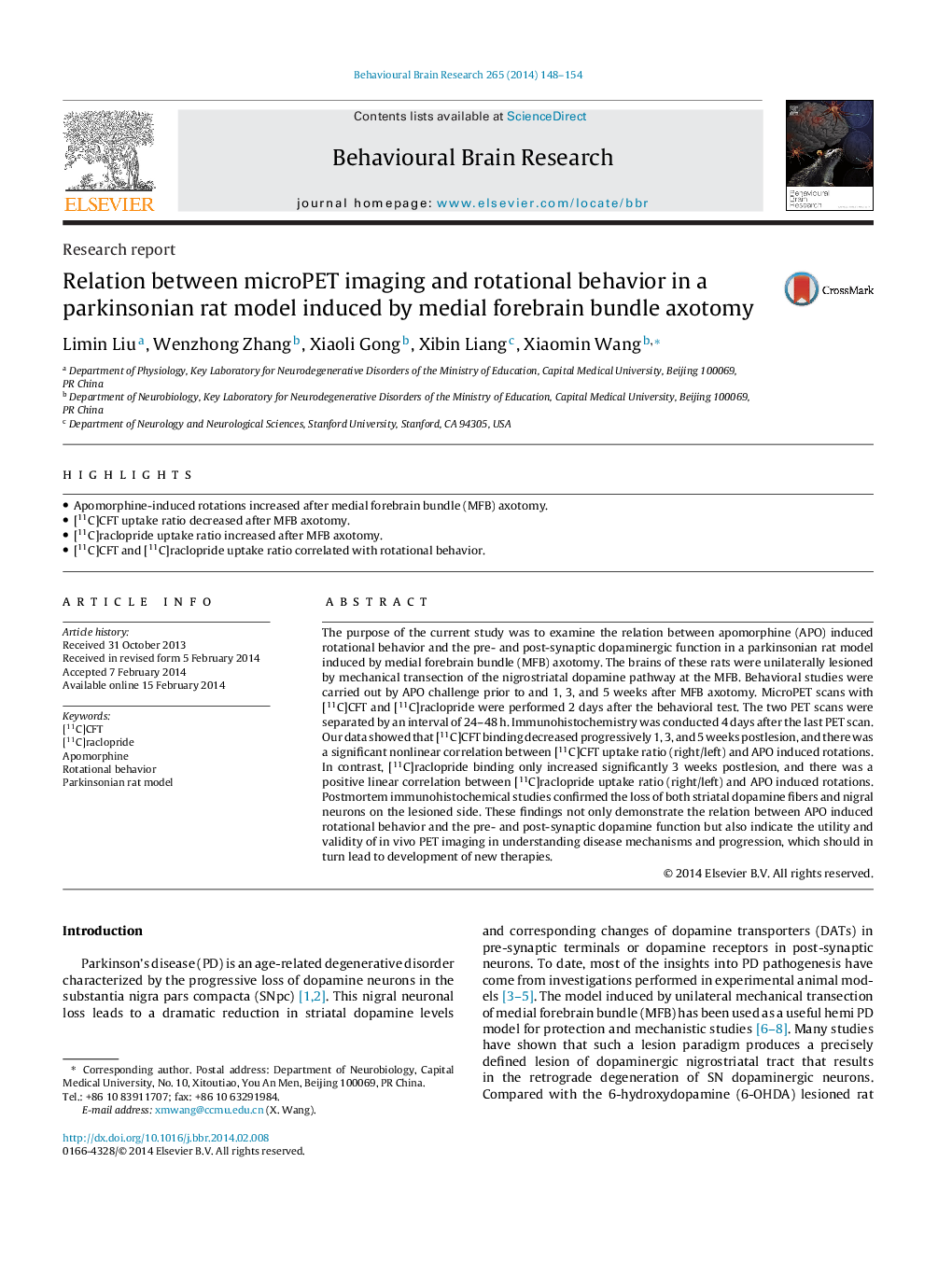| Article ID | Journal | Published Year | Pages | File Type |
|---|---|---|---|---|
| 6258306 | Behavioural Brain Research | 2014 | 7 Pages |
â¢Apomorphine-induced rotations increased after medial forebrain bundle (MFB) axotomy.â¢[11C]CFT uptake ratio decreased after MFB axotomy.â¢[11C]raclopride uptake ratio increased after MFB axotomy.â¢[11C]CFT and [11C]raclopride uptake ratio correlated with rotational behavior.
The purpose of the current study was to examine the relation between apomorphine (APO) induced rotational behavior and the pre- and post-synaptic dopaminergic function in a parkinsonian rat model induced by medial forebrain bundle (MFB) axotomy. The brains of these rats were unilaterally lesioned by mechanical transection of the nigrostriatal dopamine pathway at the MFB. Behavioral studies were carried out by APO challenge prior to and 1, 3, and 5 weeks after MFB axotomy. MicroPET scans with [11C]CFT and [11C]raclopride were performed 2 days after the behavioral test. The two PET scans were separated by an interval of 24-48Â h. Immunohistochemistry was conducted 4 days after the last PET scan. Our data showed that [11C]CFT binding decreased progressively 1, 3, and 5 weeks postlesion, and there was a significant nonlinear correlation between [11C]CFT uptake ratio (right/left) and APO induced rotations. In contrast, [11C]raclopride binding only increased significantly 3 weeks postlesion, and there was a positive linear correlation between [11C]raclopride uptake ratio (right/left) and APO induced rotations. Postmortem immunohistochemical studies confirmed the loss of both striatal dopamine fibers and nigral neurons on the lesioned side. These findings not only demonstrate the relation between APO induced rotational behavior and the pre- and post-synaptic dopamine function but also indicate the utility and validity of in vivo PET imaging in understanding disease mechanisms and progression, which should in turn lead to development of new therapies.
